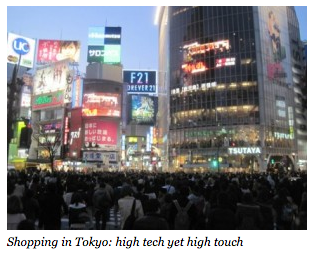
'Can I Help You?' Three Ways The Japanese Do Customer Service Better
When the young sales associate walked me out to the sidewalk to bow and thank me for coming into the store, I knew I wasn’t in Chicago anymore.
After all, I hadn’t even bought anything.
I just got back from my first visit to Japan to observe the country’s retail environment. I had envisioned a retail scene so high tech that I’d be able to do things like buy a car from a vending machine with my cell phone. And while there may be some places in Japan where you can actually do that, I couldn’t have been more wrong about the shopping experience.
I found the Japanese brick-and-mortar retail culture to be based on something “old school”: personal service. Wherever I ventured, in stores large and small, I experienced what would be considered white-glove service back home, delivered with the kind of warmth, enthusiasm and salesmanship typically found in black-and-white movies. When set against the backdrop of the highly advanced, Bladerunner feel of Tokyo, it was intoxicating.
And it was a stark contrast to customer-service standards here in the U.S., which, with some notable exceptions, could generally could be described as either lackluster or ….hey, would it kill you to give me eye contact?
As traditional retailers wring their hands over consumers flocking to the internet and its (often) low prices, one of the strongest and most under-utilized weapons they have is customer service. Brick-and-mortar retailers have an urgent need to deliver a personalized, emotionally engaging experience that people can’t get from shopping at home on the couch. Research shows that women, who drive nearly 80% of all consumer spending, place a particularly high value on the service experience. Yet few retailers seem to have made this a priority. If not now, when? Exactly how many empty storefronts do we need to get the message?
There were three insights I took from my back-to-the-future experience in Japan:
Read More on Forbes.

Source: BB Wix
